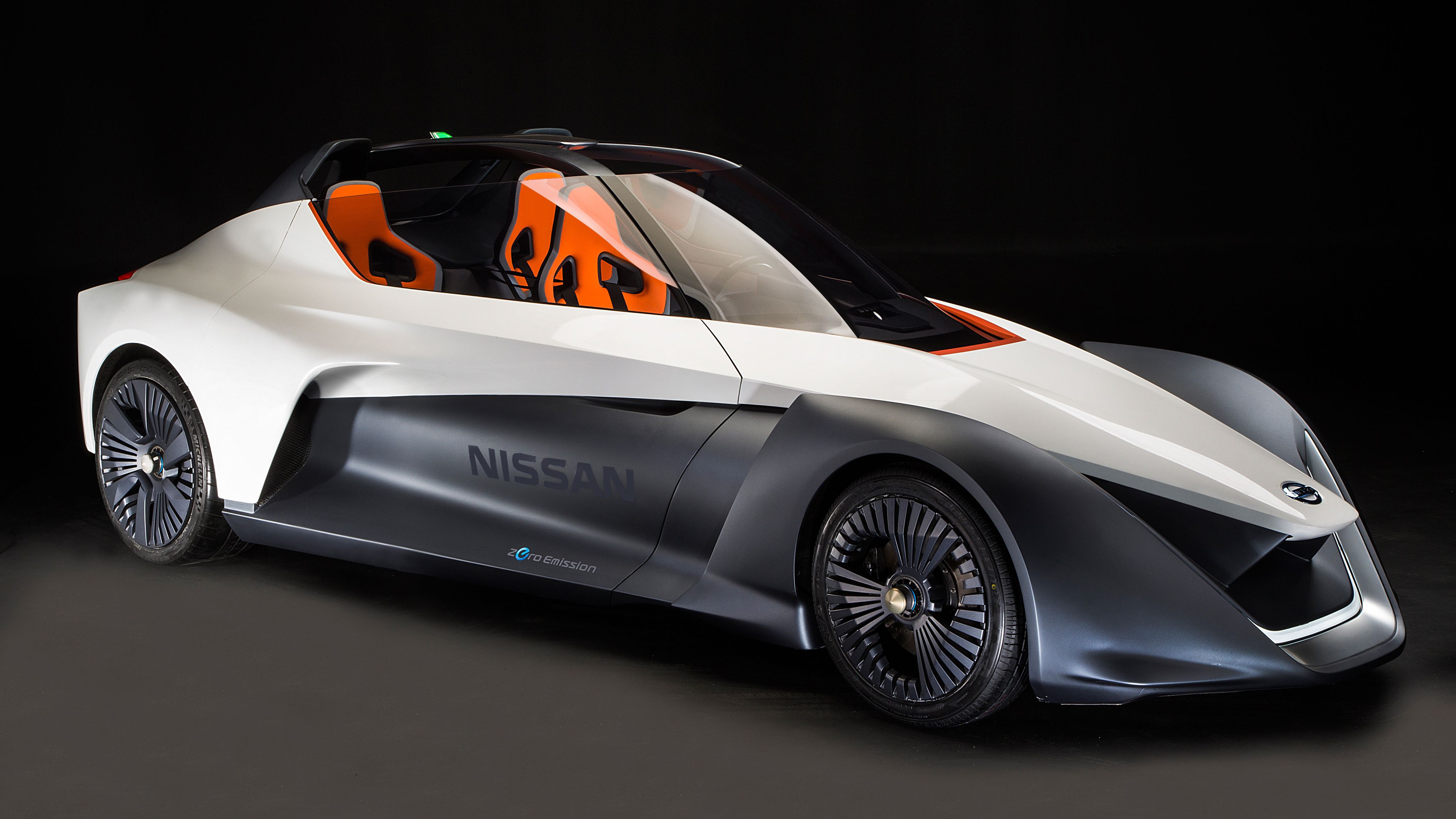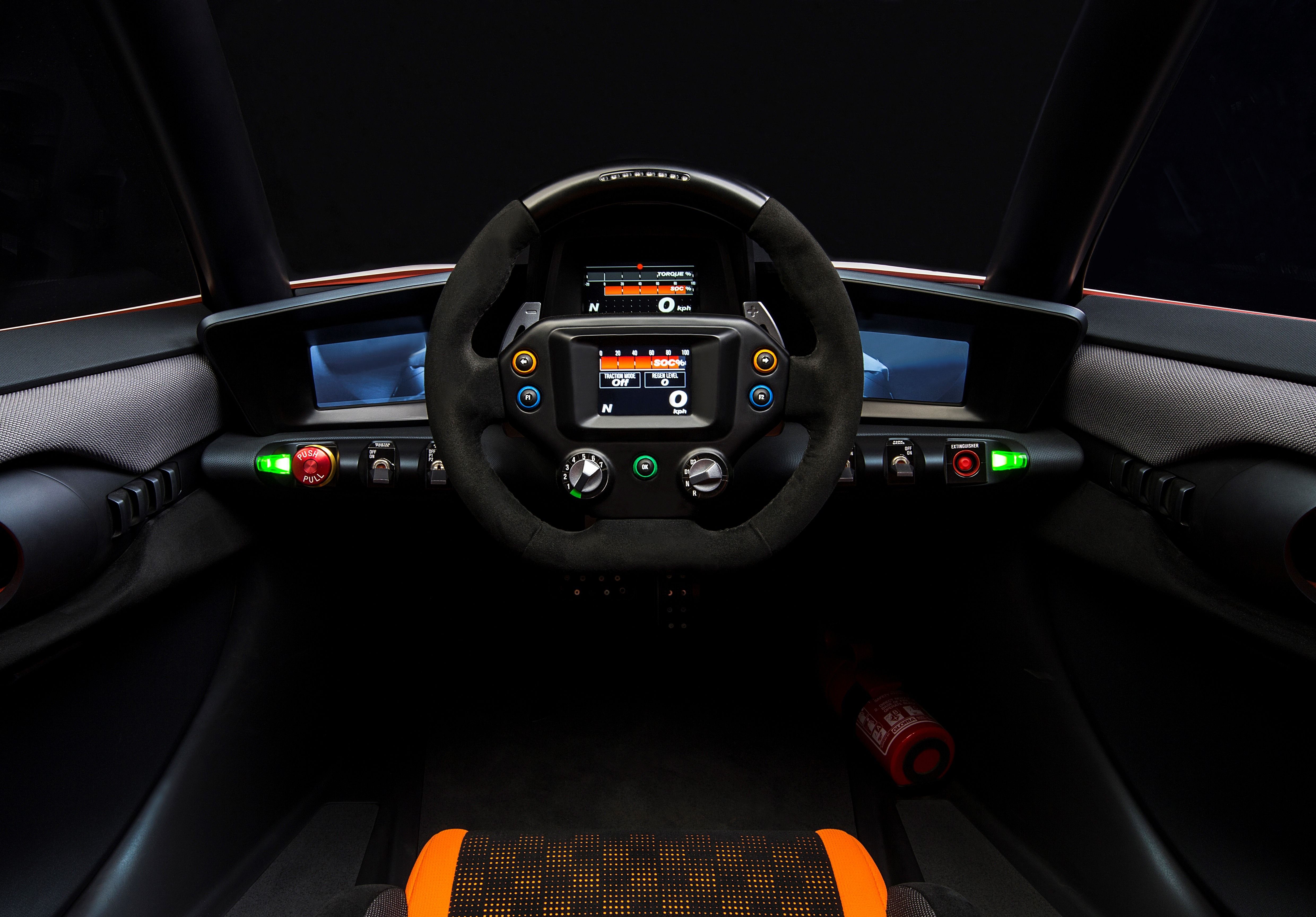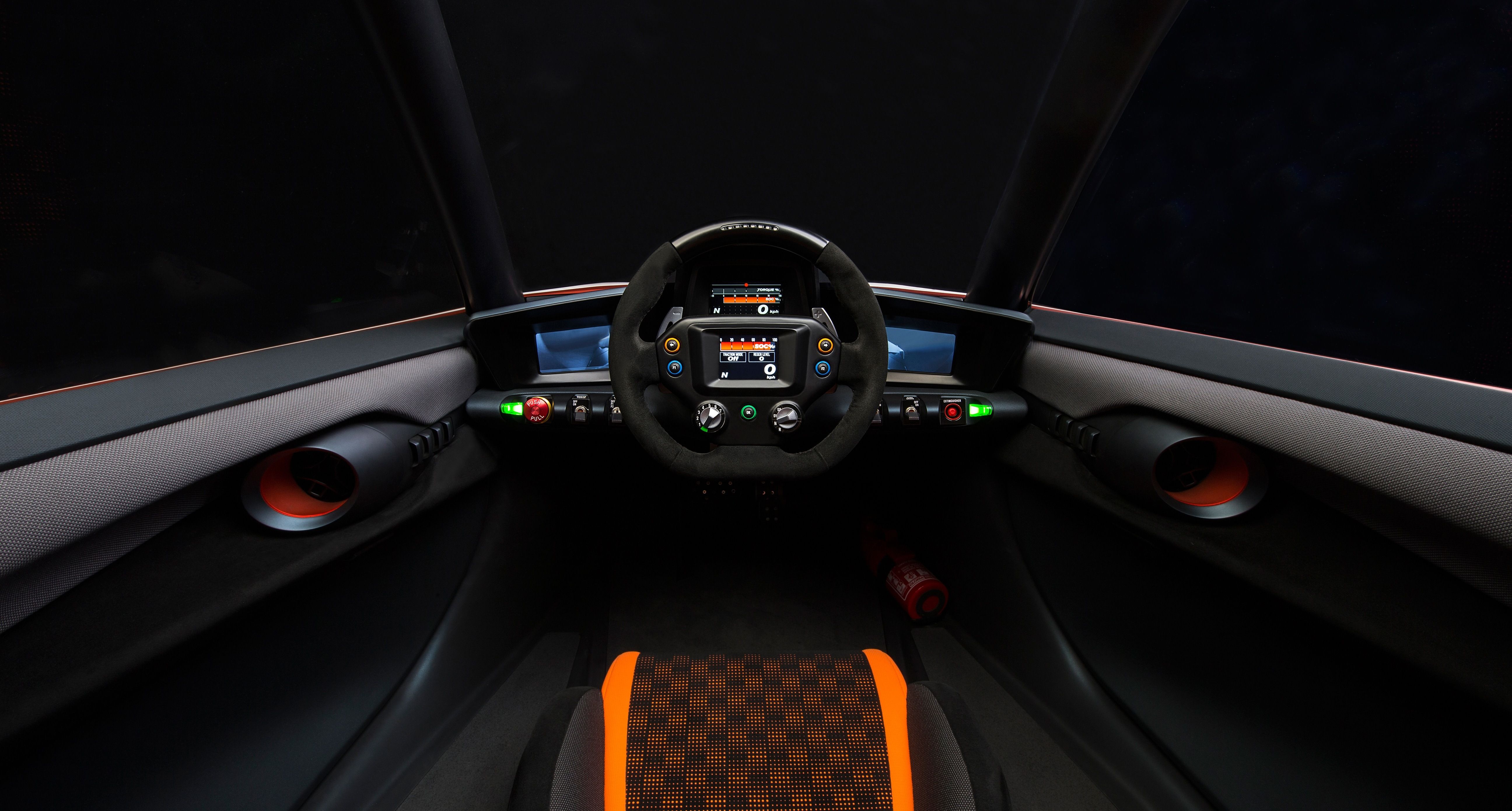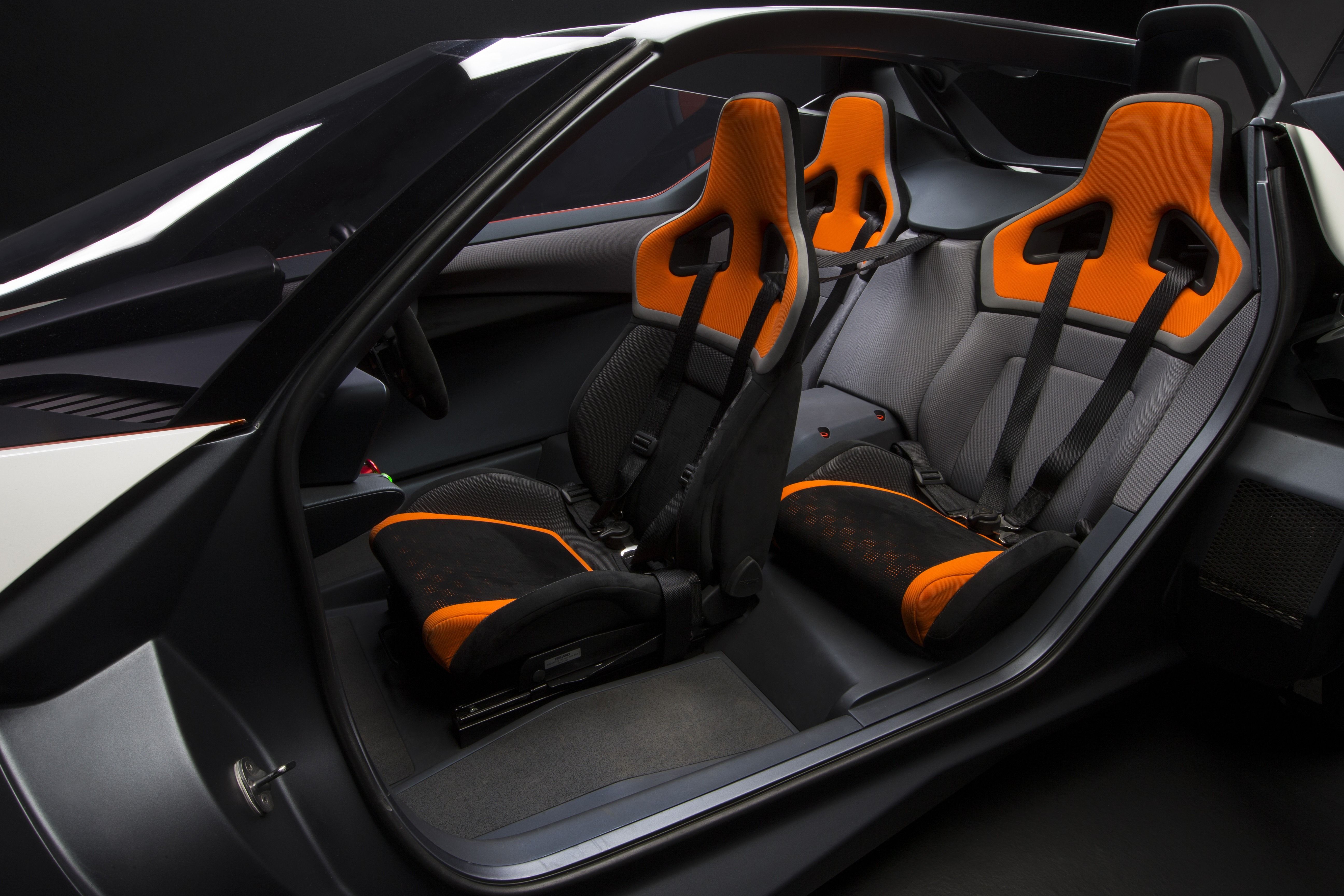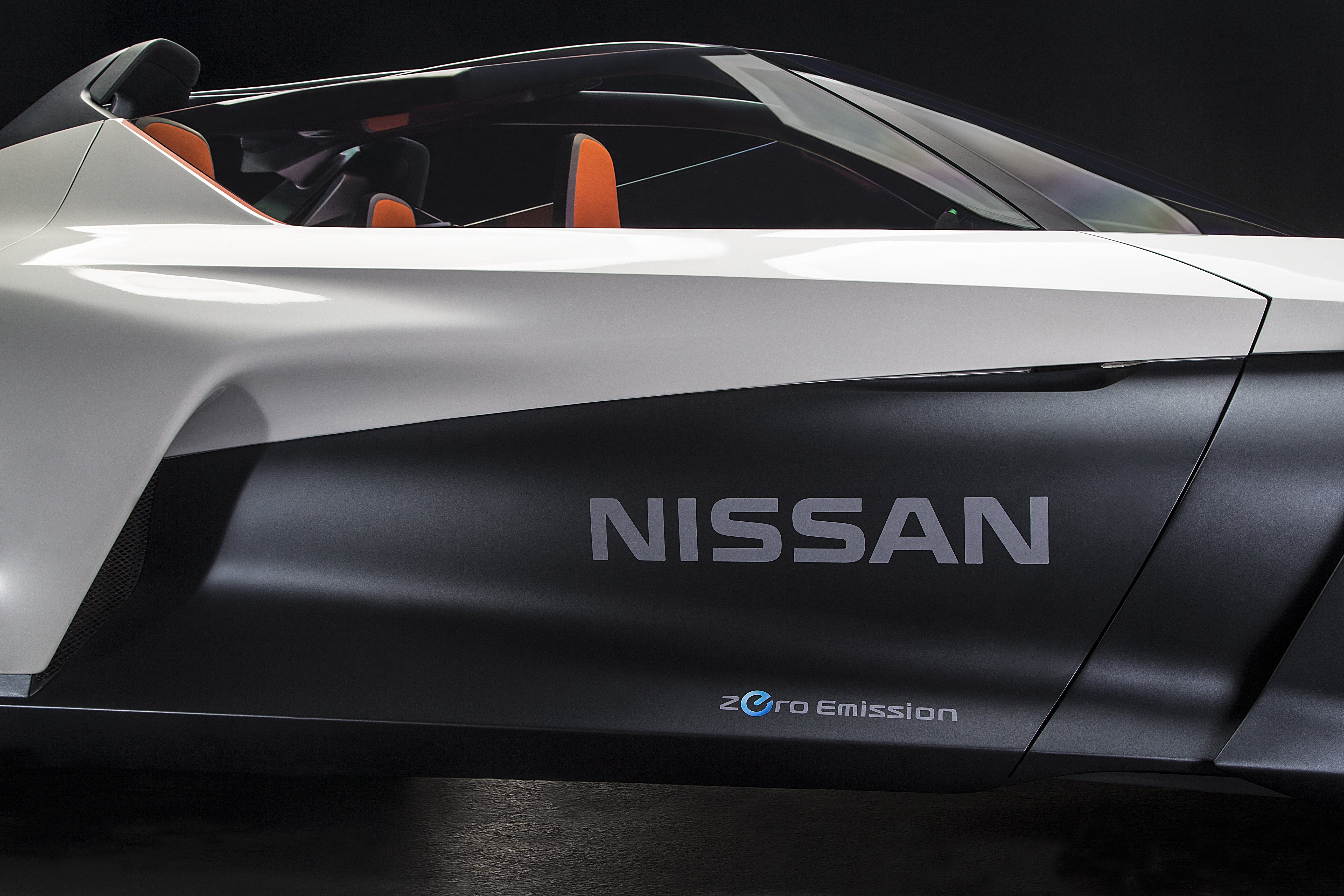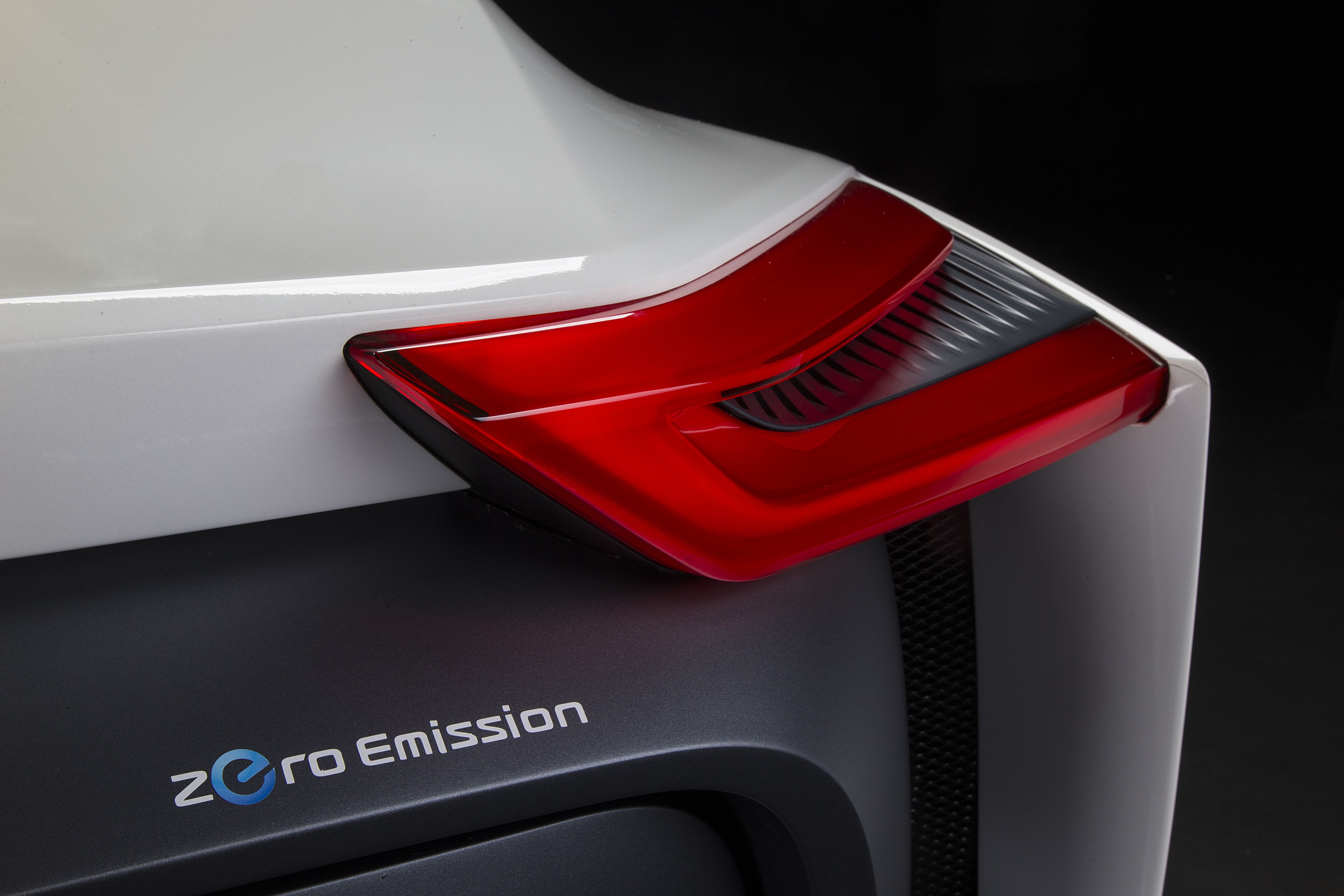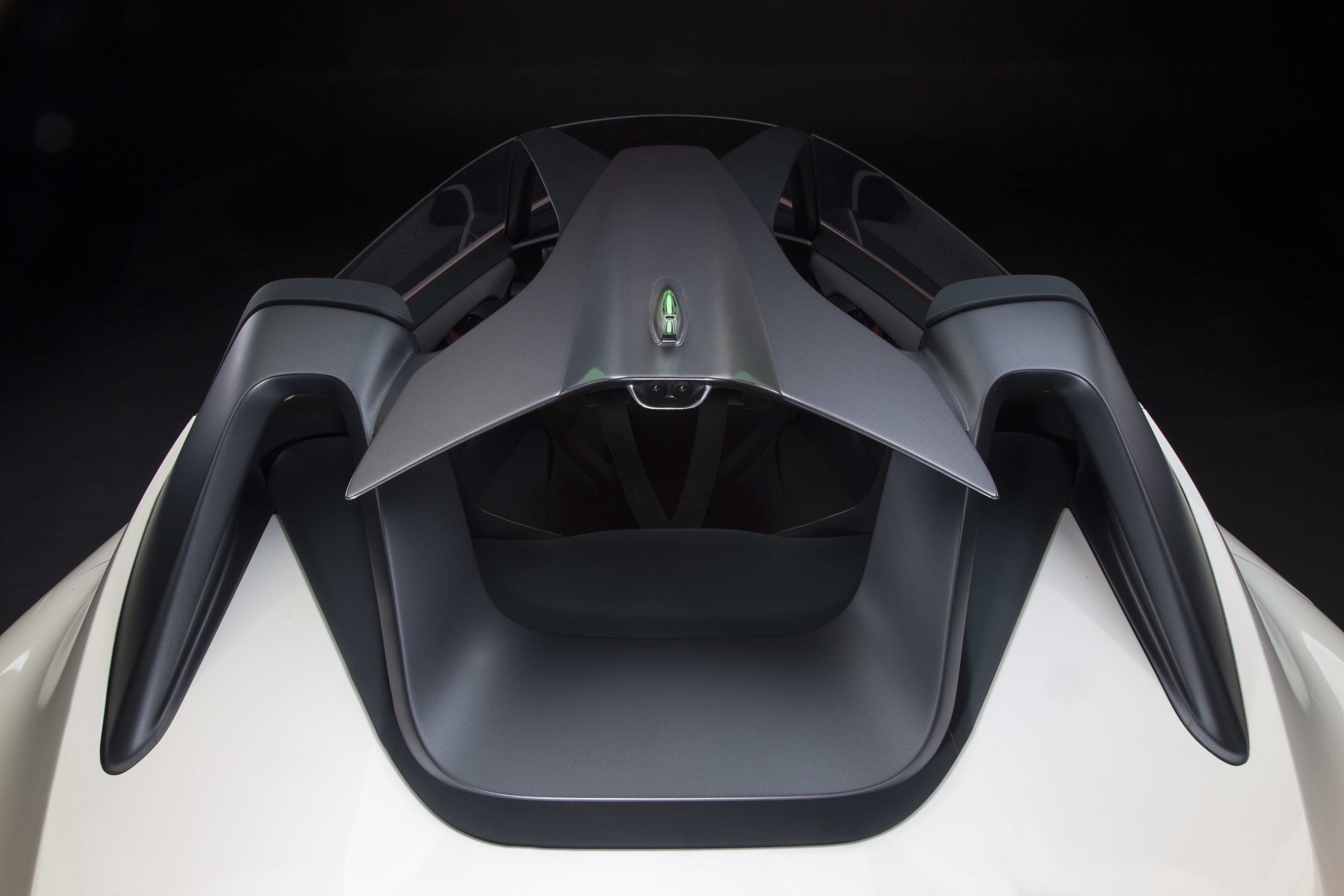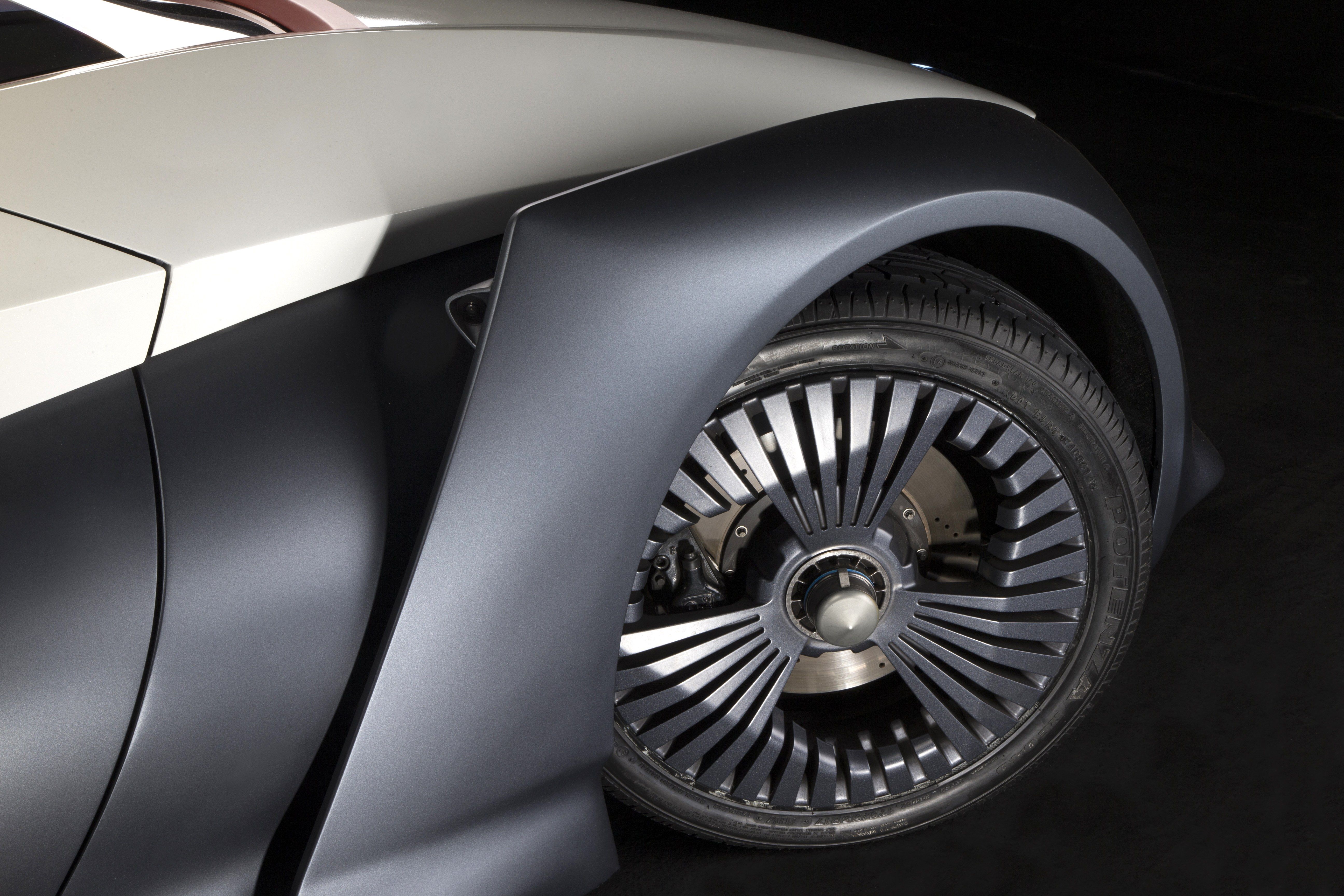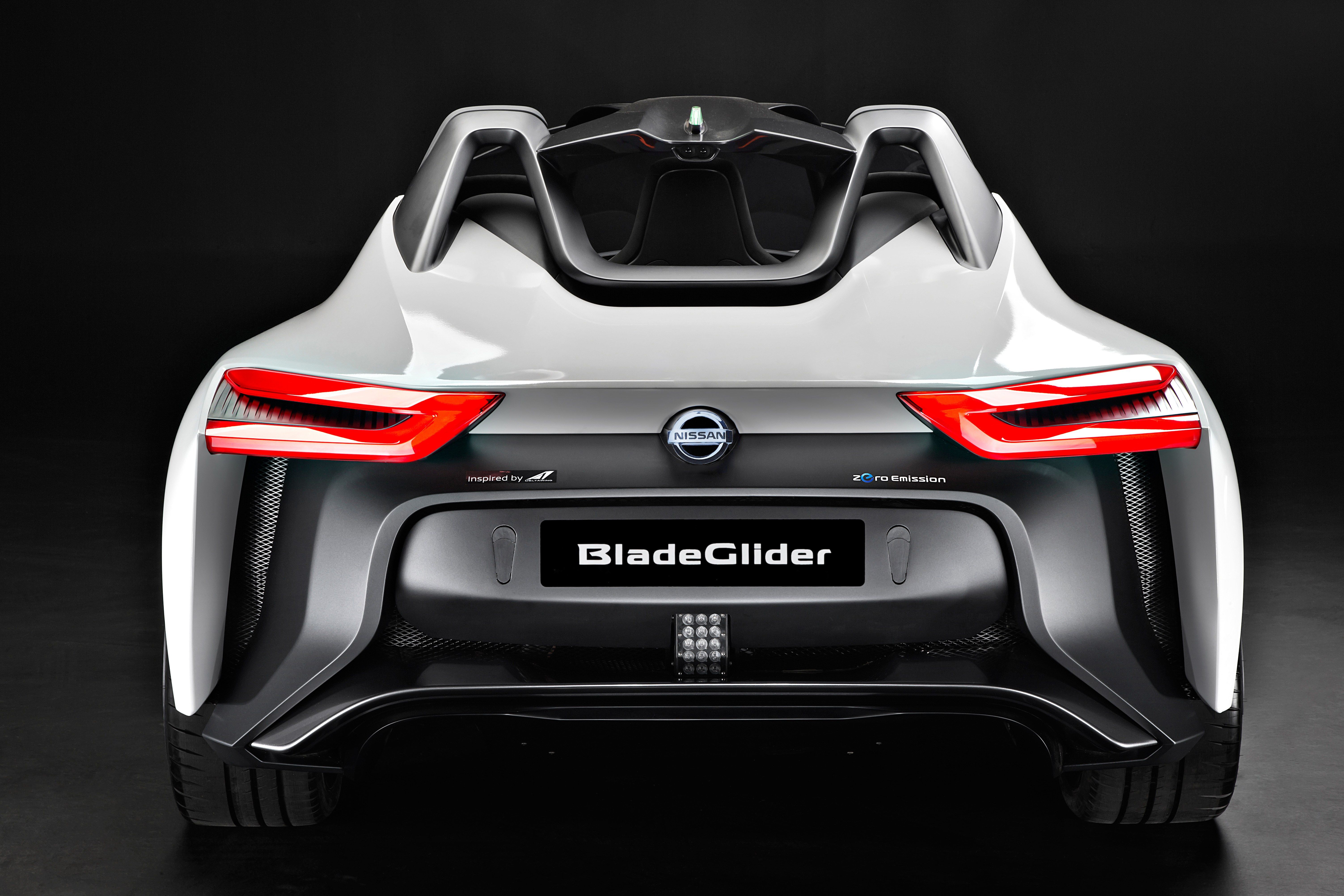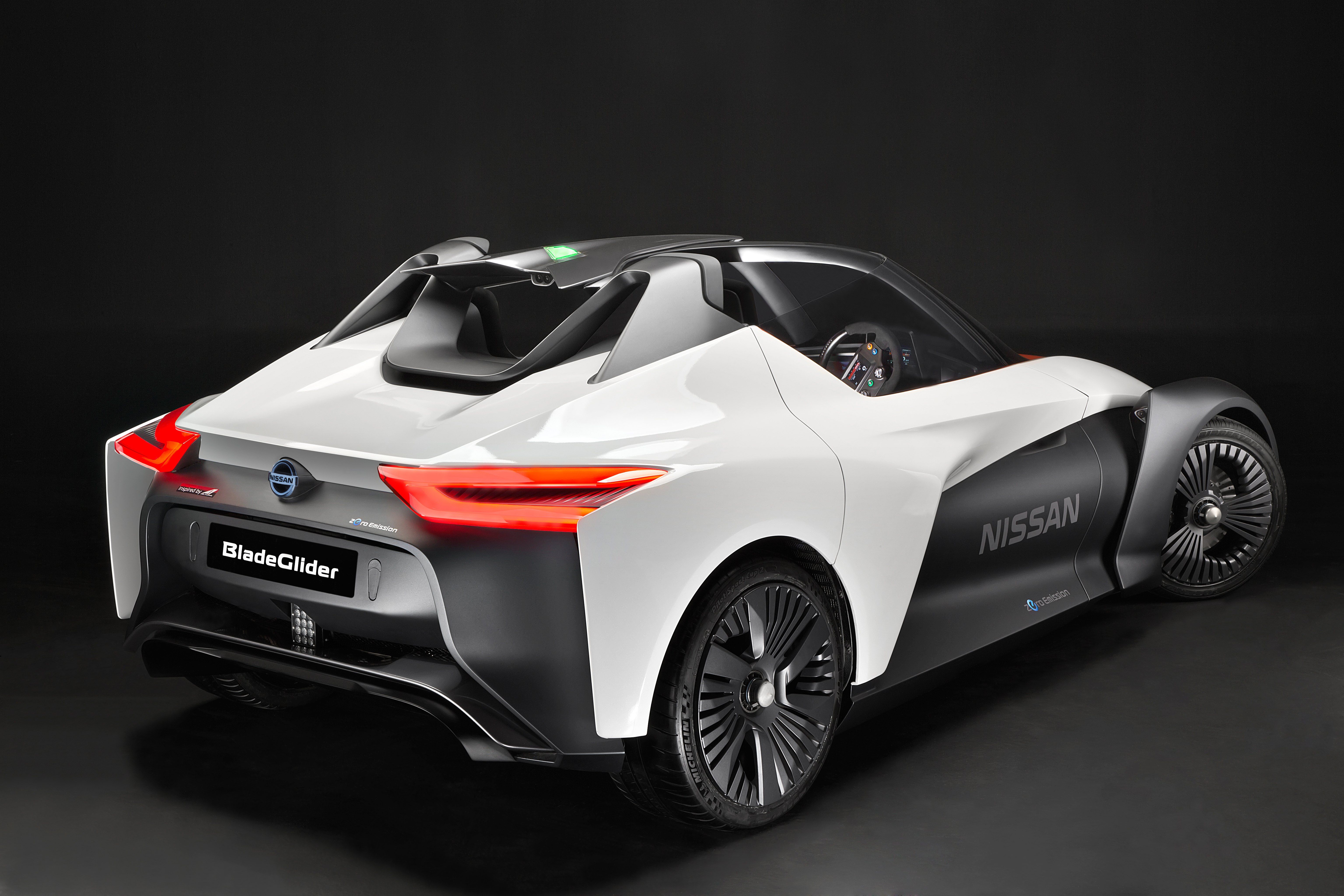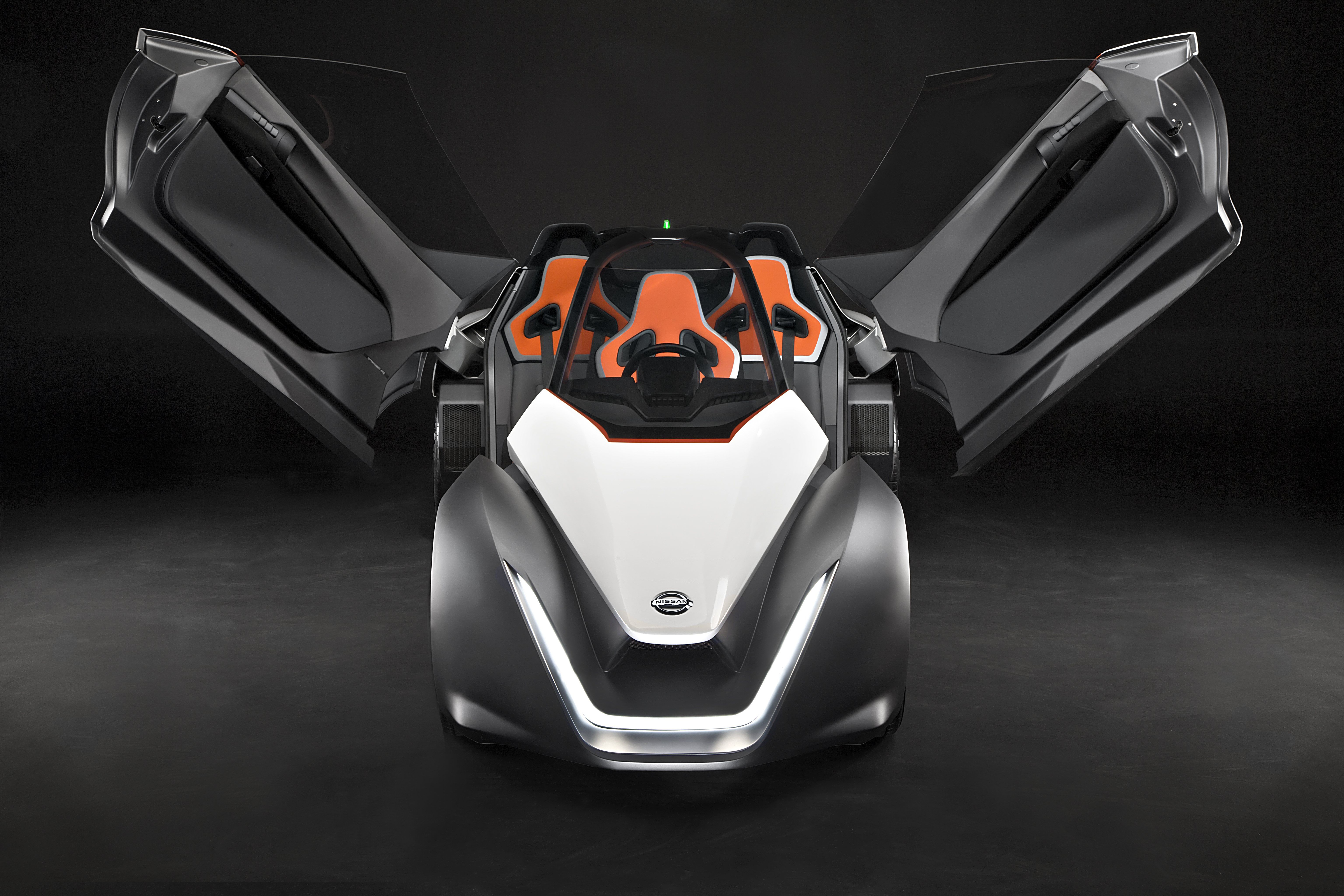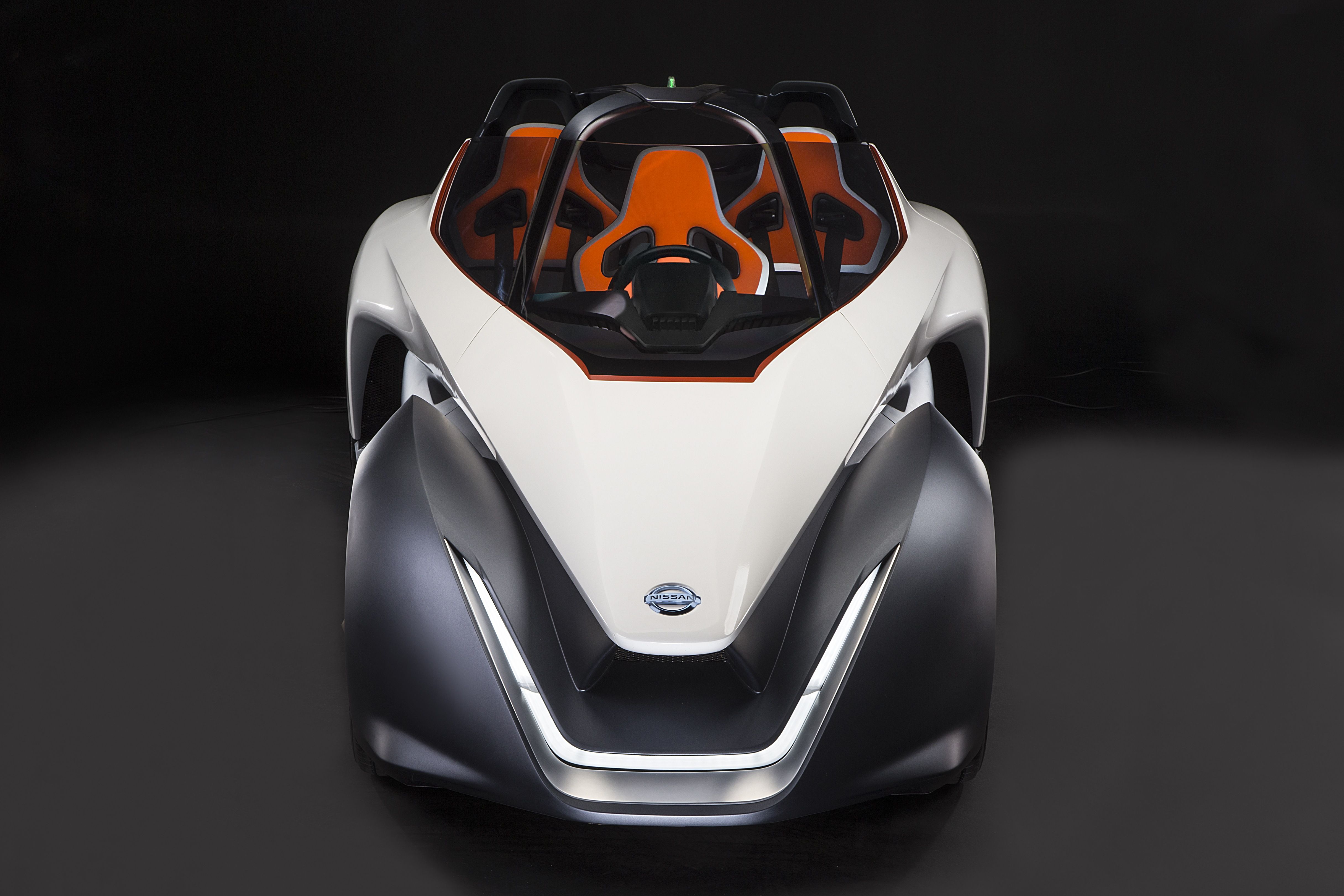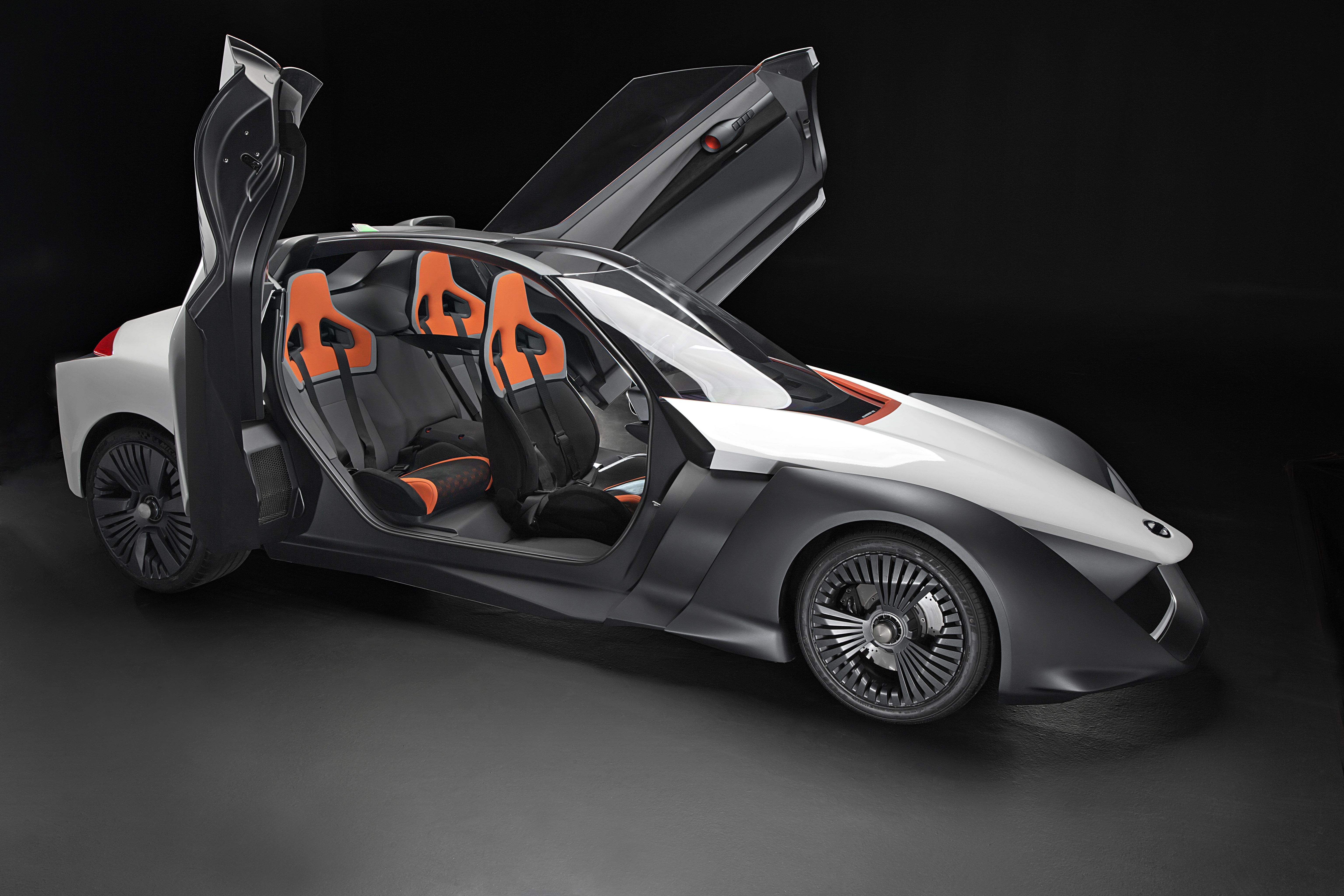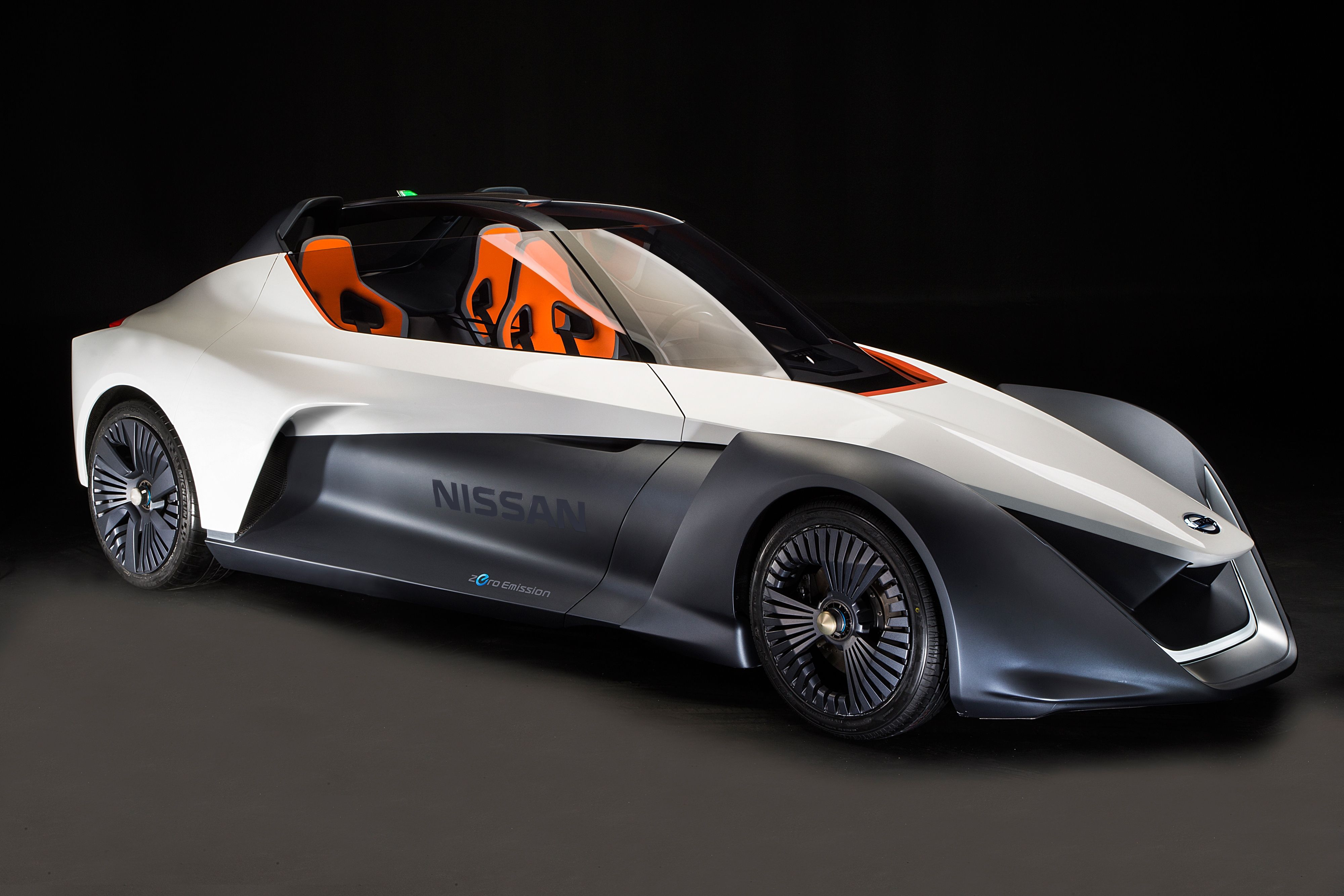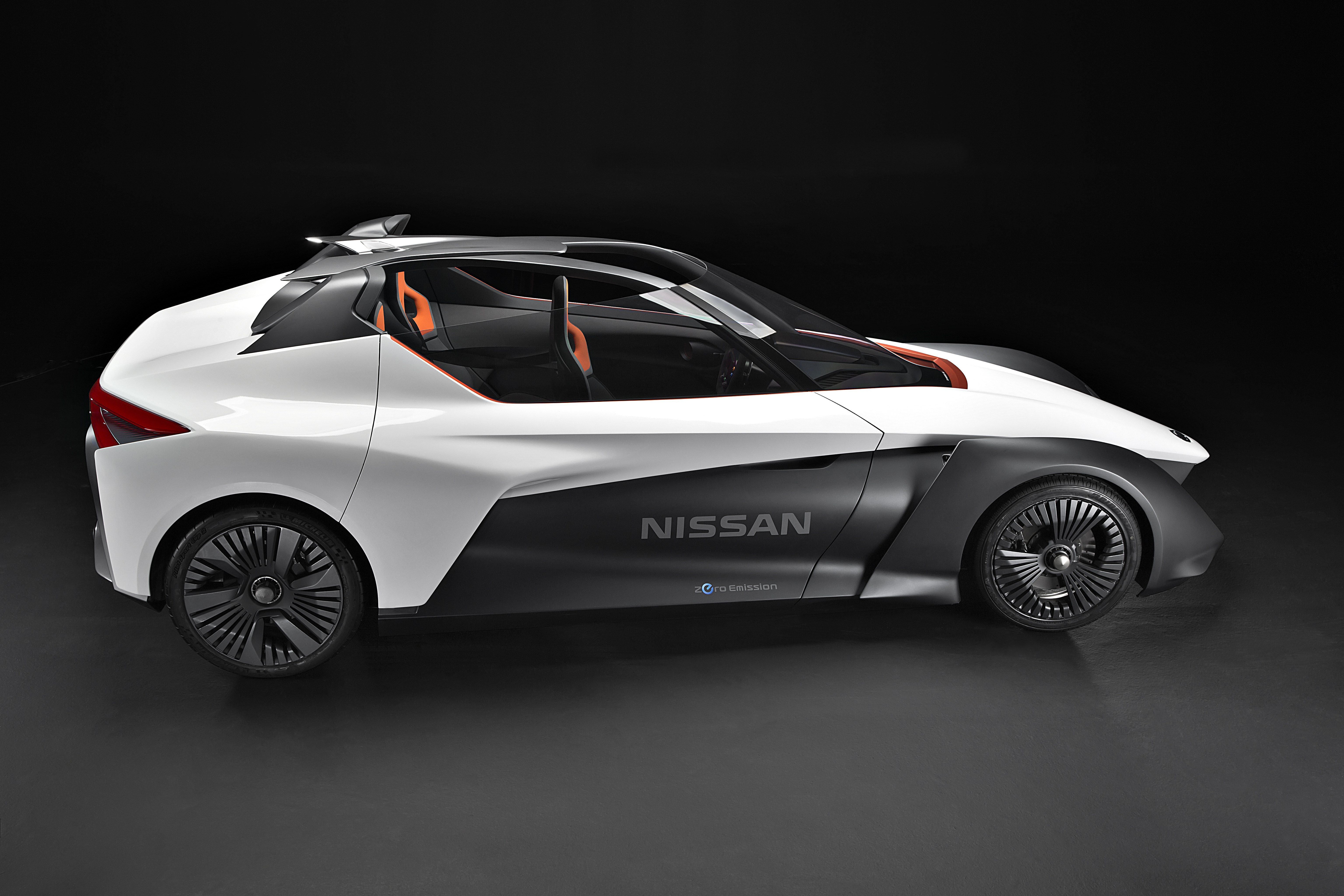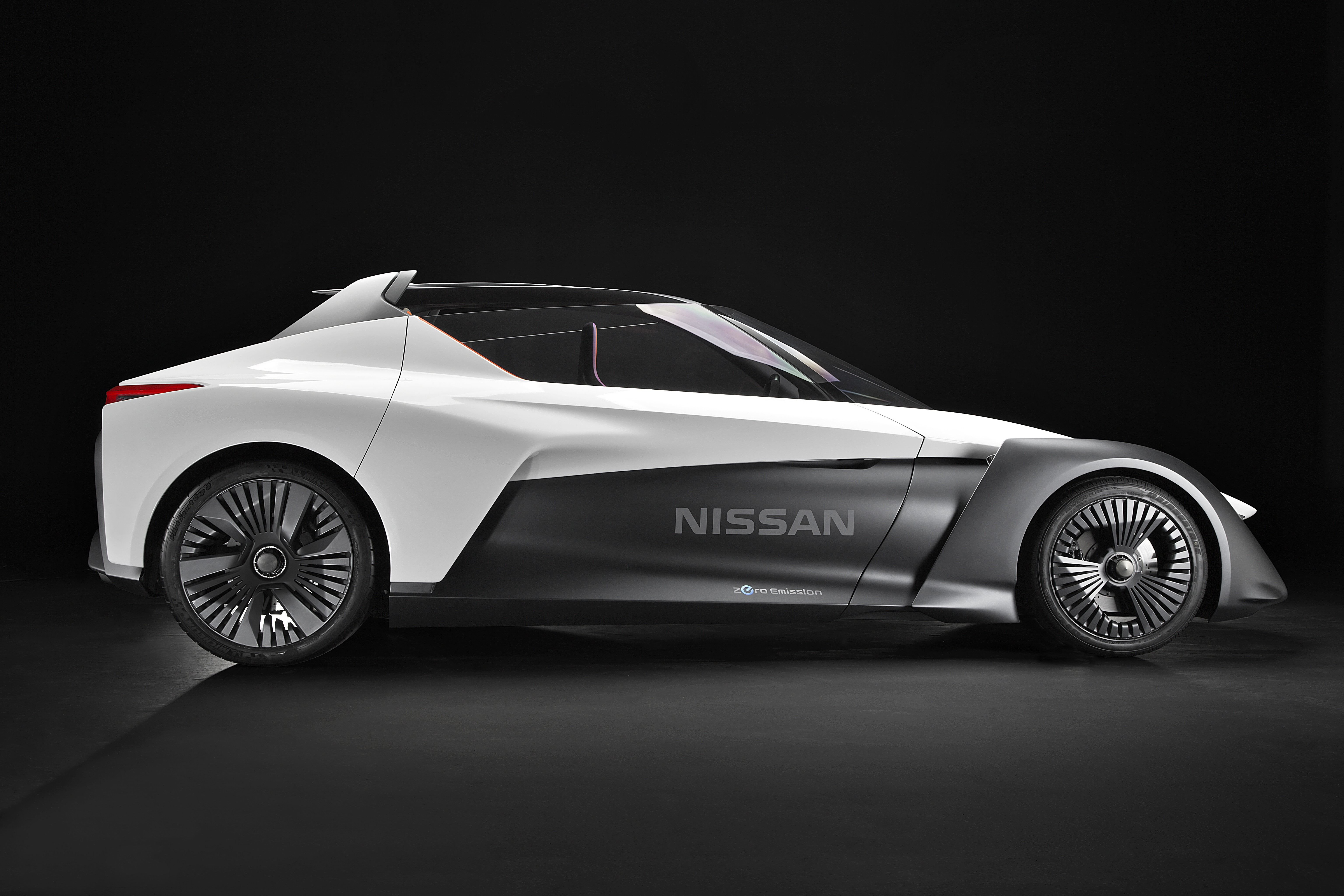The hard-edged slab of future tech you see before you is called the Bladeglider, and it’s Nissan’s latest effort in creating an all-electric performance machine that combines the frugality of zero emissions with the fun of adrenaline-inducing speed. It’s a prototype (if that wasn’t already abundantly obvious), but it’s already got all the equipment needed to take a spin out on the open road, including two 130-kW electric motors, a boatload of torque, and a tight, high-performance interior.
The Bladeglider was developed from a concept originally shown at the 2013 Tokyo Motor Show. That vehicle, which was also called the Bladeglider, came with a similar three-person cabin layout and all-electric drivetrain, but this latest prototype is the product of two years of development from the original.
Nissan says it represents “future technologies that will combine Intelligent Mobility, environmentally-friendly impact and sports car driving capabilities,” while Carlos Ghosn, the President and CEO at Nissan, calls it an “electric vehicle for car-lovers.”
So then – what makes this thing such a hoot to pilot, and more importantly, is there any chance of it ever reaching production? Read on to find out.
Continue reading to learn more about the Nissan Bladeglider Concept.
2017 Nissan Bladeglider Prototype
- Make: Array
- Model: 2017 Nissan Bladeglider Prototype
- Horsepower: 268
- [do not use] Vehicle Model: Array
Exterior
Without a doubt, the most striking aspect of this car is its bizarre appearance. The primary motivation for the styling seems to be minimalizing air resistance – the go-to move when building an EV these days. Some of you out there might be concerned that the slipperiness comes at the cost of any performance-enhancing downforce, but considering this vehicle’s low top speed, that shouldn’t really be too much of an issue.
On the whole, the Bladeglider looks to pull cues from a variety of previous Nissan vehicles, such as the ZEOD RC, the hybrid racer that competed at Le Mans in 2014, and the IDx Nismo concept, the sporty two-door concept that dropped in Tokyo the same year as the original Bladeglider.
Let’s start in front, where we find several chevron shapes forming an almost beak-like nose. This includes a strip of silver forming the lower “V-Motion” grille, one of Nissan’s defining styling characteristics.
These features make the Bladeglider look extremely narrow, but as soon as you step to the side, the car widens substantially. In profile, the two-tone paint scheme becomes much more obvious, with white in the rear extending forward over flat black in front. The fenders jut upwards, directing airflow around the turbulent spinning wheels, and the whole thing starts to look a bit like a slender P1 Le Mans racer.
Speaking of the wheels – these rollers look incredibly cool. There are radiant spokes forming a trio of pillars in a shape that mimics that of a radioactive material symbol, and they come finished in a gunmetal coloring. Normally, I’m not a big fan of wheels that are this busy, but on the Bladeglider concept, it works.
In back, the flat, squared-off tail and sharp taillight units remind me of the BMW i8. The two-tone colors are present here as well, and there’s a glossy mesh filling the gaps between the striking bodylines. Below is the hint of a diffuser, while above, you’ll find the structural components of the roll bars.
The Bladeglider is actually roofless, although the design is closer to a targa top than a convertible. Nissan says it provides “the exhilaration of an open-topped race car with the safety of a coupe,” but to be honest, it really doesn’t look all that safe to me. There isn’t a whole lot to protect it from side impacts.
But that’s okay – the point of this thing is to look good, which it does.
|
Exterior Dimensions |
|
|
Width |
1,850 mm (72.8 Inches) |
|
Length |
4,300 mm (169.3 Inches) |
|
Height |
1,300 mm (51.2 Inches) |
|
Wheelbase |
2,800 mm (110.2 Inches) |
Interior
Sitting inside the Bladeglider is a lot like being in a fighter jet. The driver sits front and center, and gets an array of high-tech controls to play with, including a layout on the steering wheel that looks quite similar to a Formula 1 car. This high-performance unit gets stuff like adjustable knobs, thumb-length buttons, and what appears to be shift lights across the top.
The instrumentation is 100 percent digital. There are two central driver’s information displays, one behind the steering wheel and another inside of it, which are used to provide the pilot with critical data like road speed, battery charge state, current “regeneration mode” (presumably more aggressive or less aggressive brake energy reclamation), and torque map (multiple driving modes for whatever the situation may be, whether it’s a high-performance track day or cruising down to the store for a quart of milk).
Bookending the central display are dual ancillary screens that are hooked up to rear-facing cameras mounted just behind the front wheels. These give the driver a view of what’s behind him, replacing side-view mirrors and improving the Bladeglider’s overall aerodynamic efficiency.
In back, there’s enough room for two additional passengers to sit side-by-side. Ingress and egress is accomplished by way of “high-waisted, rear-hinged dihedral” doors, which is just a fancy way of saying doors that open up and out from the rear. While hopelessly impractical in any kind of tight space, these doors do add a serious amount of spectacle (as if the styled-by-Tron body wasn’t enough).
The seats are all highly bolstered sports units, which are decked out in both fabric and an epoxy resin designed to keep you from sliding around when testing the car’s dynamics. Four-point harnesses complement this characteristic.
For colors and trim, Nissan is offering up a black-and-silver motif paired with either Cyber Green or Stealth Orange, depending on the prototype (Nissan made two of them).
Finally, the car’s broad, airplane-esque window canopy provides excellent viewing of the world outside.
Drivetrain
If the aesthetics lend this vehicle the “blade” part of its name, then the electric motivation provides the “glide.” No combustion means silent running, and the Bladeglider promises to flit around with a good amount of sporting potential.
Responsible for developing the electric drive system is the U.K.-based Williams Advanced Engineering. Making the go is a pair of 130-kW electric motors, one per rear wheel. The motors are juiced by five 220-kW lithium-ion battery packs, and the whole system is kept at its optimum running temperature thanks to a customized cooling system made specifically for the Bladeglider.
Output is rated at 200 kW, or 268 horsepower, which is okay for a vehicle of this size and weight, but not spectacular. Much more impressive is the torque, which is rated at 707 Nm, or 521 pound-feet. And considering this is EV output we’re talking about, every bit of it is made at zero rpm.
So what’s that mean for actual performance figures?
Quoting figures from Williams Advanced Engineering, Nissan says this prototype can hit 60 mph in less than 5 seconds, while the top speed is rated at 190 km/h (115 mph).
That’s not bad for an EV. While the top speed might seem pretty low, this thing probably has an absolutely ferocious launch off the line, but runs out of steam as the speed builds. Still, around town, it’s nice to have 521 pound-feet available with a single stab of the long skinny pedal.
Chassis And Handling
Thankfully, this thing supposedly has the handling chops to match its drivetrain. Under the body panels you’ll find an “advanced chassis configuration,” with a front track that’s narrower than the rear track. This set-up was done to help maximize aerodynamic efficiency, which makes sense from an mpge point of view, but Nissan says it was also done to increase “handling stability.”
Of course, “stability” can mean a lot of different things when you’re hunting apexes, and a wider rear track would suggest the Bladeglider very stably understeers. Thankfully, the rear drive wheels are equipped with torque vectoring technology to help make it more neutral. Nissan even points out that “if the car starts to understeer, it automatically sends more torque to the outside wheel to restore the handling balance,” which should go a long way in making this thing slice asphalt.
The torque vectoring system is equipped with three different settings – “off, agile and drift mode.” (Don’t tell the Aussies about that last one.)
Curb weight comes in at 1,300 kg, or 2,866 pounds, which may seem like quite a lot for a car this size. However, you gotta remember that this is an EV, and as such, the stuff to make it run (battery packs, electric motors, etc.) adds quite a bit of heft.
Conclusion
Unfortunately, I doubt the Bladeglider will make it past the concept stage. It’s just too weird and niche-oriented to really be taken seriously.
That said, it’s great to see Nissan thinking like this. EVs will continue to expand their appeal around the world, and I don’t foresee that ever slowing down. As such, a performance machine like this is a great way to test the waters for something a little more production-friendly in the future.
Does the Bladeglider provide any clues as to what we could be seeing from the next-generation GT-R or Z? Maybe.
Either way, the two prototypes are heading to Rio de Janeiro this month to show off their performance figures, handling prowess, and future-sports-car attitude, with one of the two used for show, and the other used for test rides.
Can these zero-emissions carvers evolve Nissan’s EV offerings past the commuter-spec Leaf? Here’s to hoping.

